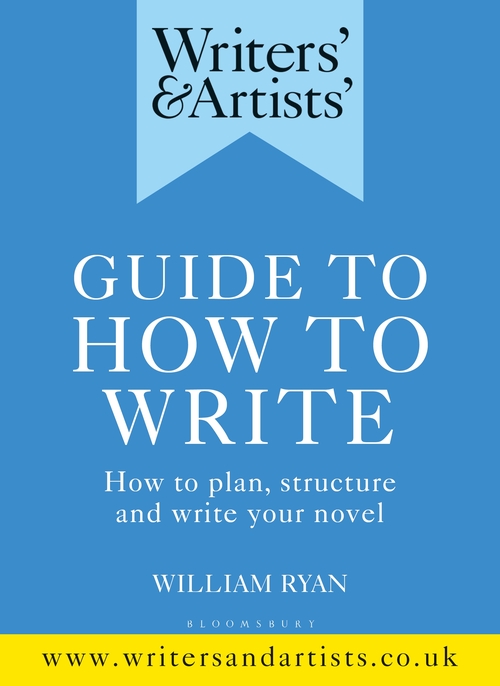Acclaimed novelist and W&A course leader, William Ryan, offers five top tips on improving your first draft and honing your manuscript to make sure it's the best it can possibly be.

I take my hat off to anyone who completes the first draft of a novel. It’s the writing equivalent of running a marathon and takes grit and, self-confidence, as well as involving a certain amount of pain. In an ideal world, the writer would be given a shiny thermal blanket and a medal for the mantelpiece right then and there – because they've achieved something truly remarkable. Instead, sadly, they have to turn back to the first page and write the novel all over again – only better this time. It doesn't seem fair.
The good news is that transforming a draft into something more polished is often the most satisfying part of the writing process, if you approach it the right way – and the following are a few suggestions as to how to go about it.
1. Take a step back
The first stage of rewriting, for me at least, is to try and take an objective look at the novel in its entirety. We are often concerned with individual sentences as writers, but we need to remember the bigger picture. I find this is best achieved by printing the first draft off and reading it through quickly, ideally in one session. I make quick notes as I go along and I try to focus on the structure and mechanics of the novel, as well as its tone and internal logic. I'm not too concerned with details at this stage – I want an overview - and when I look back at the notes I make during the read through, I generally find I've posed a series of questions.
2. Question the structure
The first questions I ask are nearly always about the plot. I want to make sure my novel works as a story and, ideally, a story that’s worth reading. Most importantly, does my novel have a beginning, a middle and an end? And if the end is represented by the central character achieving an objective, have I made that achievement sufficiently worthwhile for the character and engaging for the reader? In other words, does the beginning set up the challenge that the objective represents and does the middle include sufficient challenges and dilemmas to engage the reader. It sounds a bit wishy washy, but a good story is nearly always fundamental to writing good fiction.
3. Question the characters
Structure is important but the characters, and how they are written, are what makes a good story into a good novel. The first thing that I check is that the central characters are the characters that drive its story. The central characters should be the ones having the important conversations, making the crucial decisions and populating the key scenes. If less important characters are doing some of this work, that may be absolutely fine – but if an important plot point is being driven by a less important character, then maybe it needs looking at.
Similarly, I want to check that the subsidiary characters have an important enough role to justify their presence on the page. Most subsidiary characters provide either an obstacle or assistance to the central character in achieving their objective – or they help reveal elements of the central character's nature or situation. If they don't do one of these three things then you may need to reconsider what they’re doing in the story.

4. Do the characters all want the same thing?
If the answer to this question is yes, then you may have to ask whether your story contains sufficient conflict. Conflict doesn’t necessarily mean the characters are in direct confrontation, it may be just a mismatch in motivations or approach to the dilemmas the novel creates. These different approaches and motivations should lead the characters to compromise, or argue or manipulate, or bully depending on who they are interacting with. Each of those interactions is made interesting and engaging for the reader by the mismatch between the characters’ different positions. Likewise the characters may have internal conflicts they need to address – perhaps they will have to overcome fear, or reappraise love, in order to achieve their objective. If I don’t have sufficient conflict in the novel, whether external or internal, then I will be looking at ways to increase it.
5. What’s going on underneath?
What is my novel really about? Good fiction often has what is probably best described as a “theme layer” which operates beneath the surface level of the novel. This layer often provides the story with additional cohesion and drive. The main theme will probably be fairly apparent to the reader, however other themes may be personal to the author and much less visible. In my case, this is deliberate – I think good fiction shouldn't always be completely transparent. Readers like to be made to think a little bit about the story. If a writer has thought about the themes they want to explore, it should give the novel a logical wholeness but if they don't then the novel can seem to have a flawed internal logic. That may sound pretty theoretical – but asking the question often throws a new light on the story as a whole, and that’s always a good thing.
Each question can pose more questions but generally as the rewriting of the novel processes, your attention becomes more and more focussed until you are down to deciding whether to use one word or another out of maybe one hundred thousand. That’s all the more reason why taking a moment at the beginning of the process to look at the bigger picture will really help. It may also, by putting you in the position of reader as opposed to writer, show you that you’ve written something that you can be very proud of. I really hope that is the case – and look forward to reading your novel when it is published.
I really hope that is the case – and look forward to reading your novel when it is published.
William Ryan is the leader of a number of W&A writing courses. View all upcoming W&A writing courses here
William Ryan has written four historical novels which have been shortlisted for numerous awards, including the Theakstons Crime Novel of the Year, The Kerry Group Irish Fiction Award, the HWA Gold Crown for Historical Fiction, the Crime Writers Association’s Steel, Historical and New Blood Daggers and the Irish Crime Novel of the Year (three times). William teaches creative writing at City University in London and has previously taught at the University of East Anglia. His latest novel, A House of Ghosts, was published in 2019 by Bonnier Zaffre. The Writers' & Artists' Guide to How to Write is published by Bloomsbury and available now.
Comments